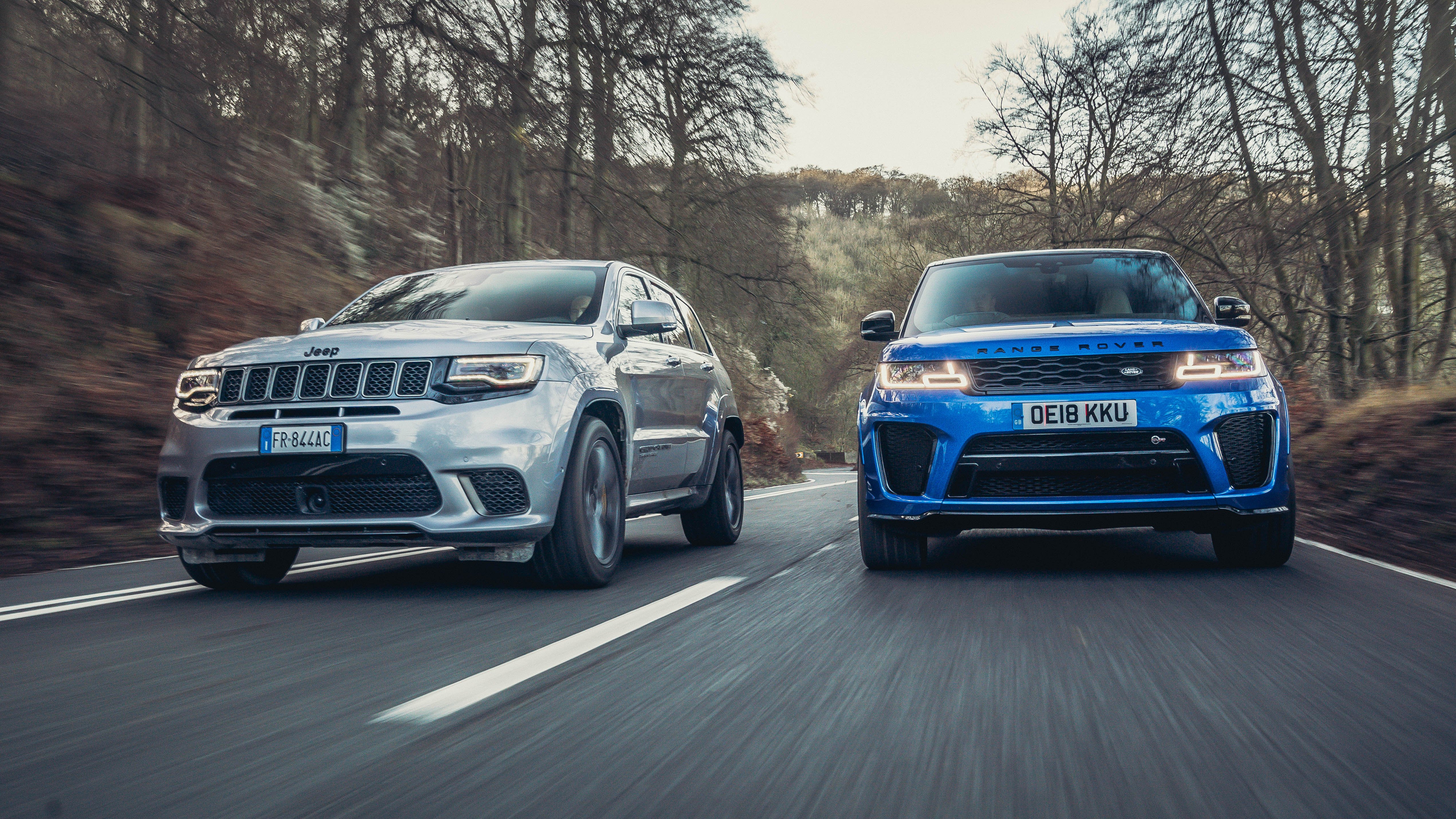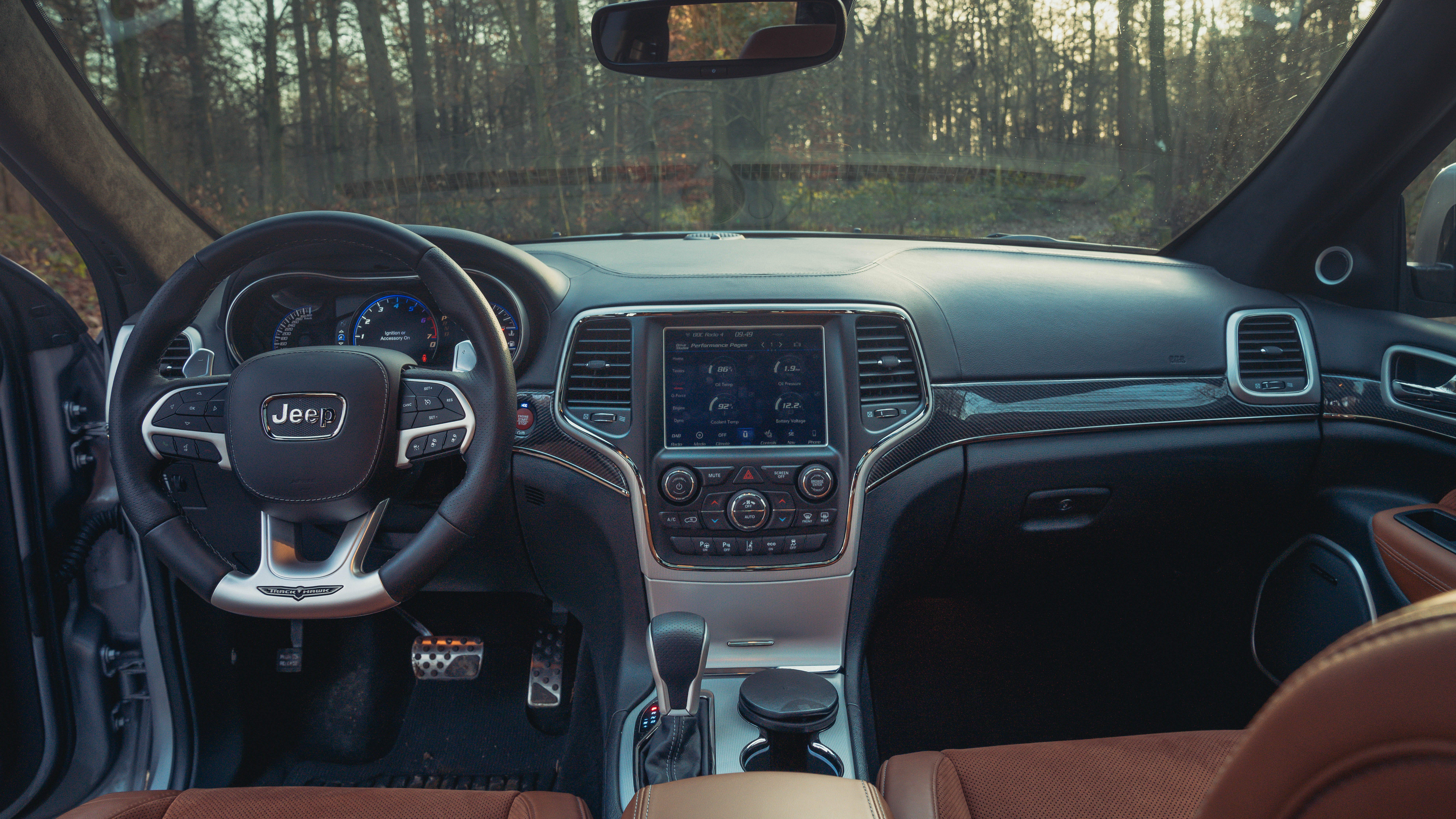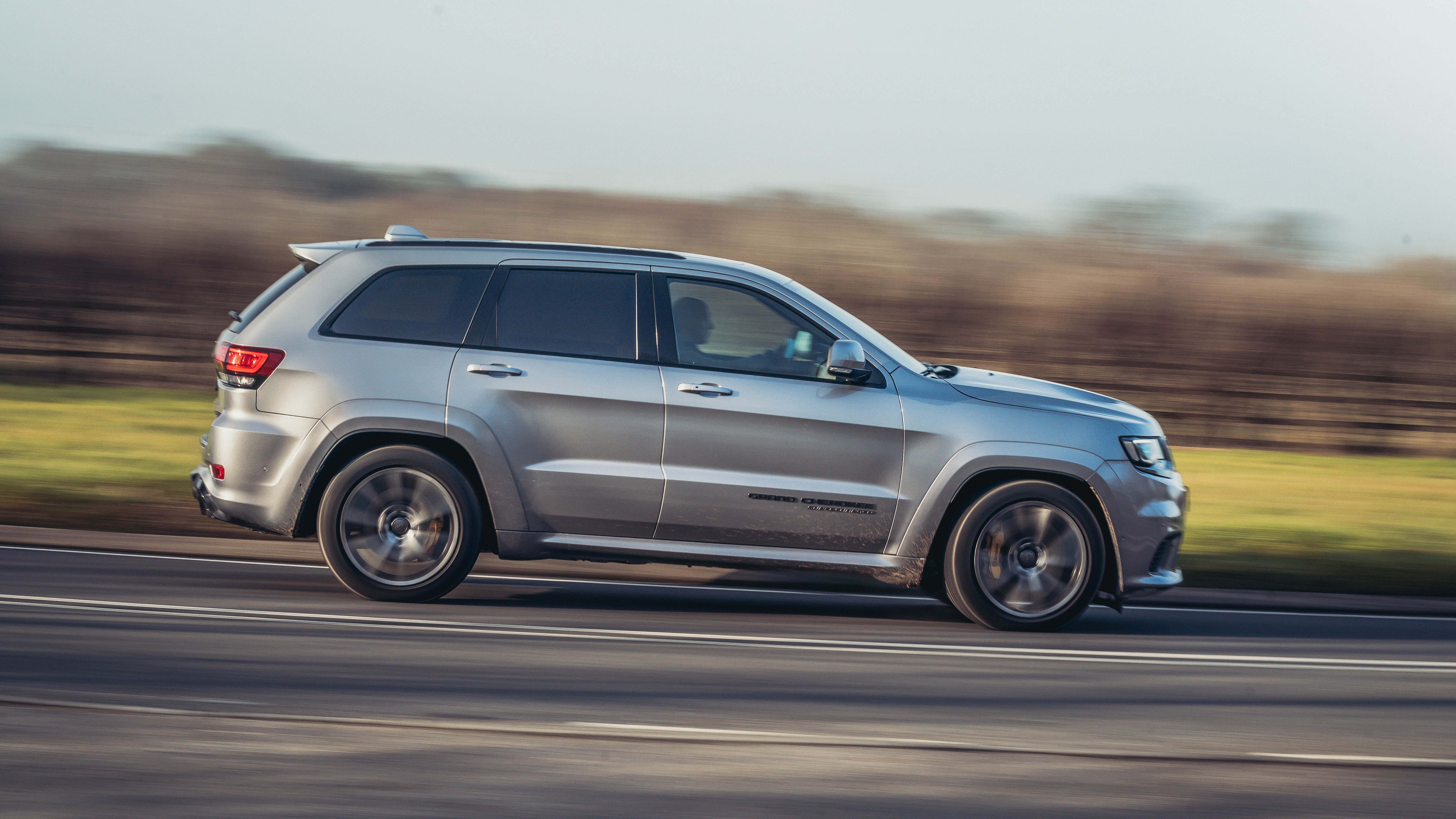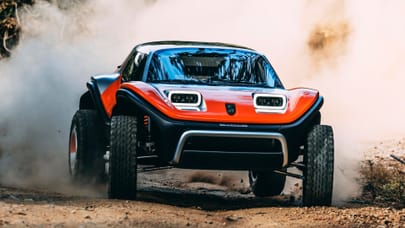
Jeep Trackhawk vs Range Rover Sport SVR
A pair of juiced up heavyweights duke it out for the title. Round 1...
You won’t believe what the Jeep Grand Cherokee Trackhawk does when you engage launch mode. I couldn’t. It was bloody hilarious. Afterwards. Fairly shocking during it, if I’m honest.
So you come to a halt, press the button with the drag strip traffic light markings on it, apply as much pressure as you can on the brake pedal – a useful graphic on the dash tells you exactly how much (my left leg maxed out at 108bar), wallop the throttle and note that you are already moving forwards. Yep, the Trackhawk is that eager to get going. Or, to put it another way, 400mm Brembo stoppers aren’t strong enough to prevent 707bhp of supercharged V8 getting going.
You release the brakes. The rear wheels spin, the nose heaves into the air, there’s a furious bellowing and out of the windscreen you note that the horizon line has also changed. The front left tyre must now be flat, you deduce. It’s not, it’s just that the rotating masses of the 6.2-litre V8 place so much stress on the chassis that it rocks over to one side.
While your brain is processing all of this and working out the right course of action (Lift! Lift! LIFT! is the primary message), 2,429kg of prime US beef has got its head up and is determinedly hurling itself onwards. It does so in a moderately loose and wayward fashion that brings to mind actual bulls. Rodeo ones.
11.81 seconds later, a chance to breathe. The on board performance app tells me I’ve just done 0-60mph in 3.2secs. It’s lying, but not much – 3.44 is what spills out of our timing gear. Faster than an Aston Martin DBS Superleggera, Lotus Exige Cup 430, Audi RS5, even Jaguar’s ultimate F-Type SVR. It’s the fastest SUV we’ve ever tested, not only to 60mph, but far beyond: 100mph in 8.00secs, the quarter mile in – you guessed it – 11.81secs at 119.3mph. And this on greasy December tarmac.
The Lamborghini Urus, when we get round to testing it, is going to have its hands full with this one. The Range Rover Sport SVR (figures 4.5secs, 10.1 and 12.8 at 112.2mph) we have brought along can only look on in dejected misery as the macho Jeep thunders about, supercharger wailing. An SUV shootout then, where one can be taken out and shot immediately. It’s what Elvis did to his De Tomaso Pantera after all.
Hold it. Judgement, even of machines as power focused as these, cannot be that binary. It’s not like the Range Rover’s a complete weakling, is it? A 5.0-litre supercharged V8 lurks in there and in isolation 567bhp and 516lb ft are colossal outputs. But more than that, there’s a philosophical overlap between these two that ties them together and separates them from the likes of the Porsche Cayenne Turbo and Lamborghini Urus. Those two are both highly professional, chock full of clever electronics to negate roll and sharpen dynamics. They’re heavyweight sports cars. These two took inspiration from a different direction: the muscle car.
The connection is physical for the Jeep – the engine is lifted straight from the mighty Dodge Challenger Hellcat. Outwardly I’m not sure you’d guess it. Not in silver at any rate. The wheels are only 20s to the Range Rover’s 22s, and the bodywork is no more aggressive – both have a similar collection of bonnet vents, black-work grilles and bluff, windswept noses. Attitude, too – boosted in the Jeep by fattened wheelarches, in the Range Rover by the way the body crouches over those giant wheels.
Both feed power from supercharged V8s to all four wheels permanently via eight-speed automatic gearboxes. On the centre consoles of each you’ll find a rotary controller to adjust set-up. In the Trackhawk it starts at Tow, then runs through Snow, Auto, Sport and Track. The SVR, being a Range Rover, leans off-road as well as on – its controller runs the full gamut from rock crawl to racetrack. Both are suitably thunderous at start up. Of the two, the Range Rover delivers the more traditional V8 burble and roar, the Jeep a slightly cleaner, higher note, overlaid almost permanently by the shrill supercharger whine. Don’t worry, both can be heard clear across a supermarket car park.
From there on things separate out. Only one can be described as sophisticated. You get in the Range Rover Sport to be greeted by this stunning cabin, all soft leather and flush fitting touchscreens. It’s deeply tasteful, so nicely done you’ll happily forgive the occasional electrical glitches that are bound to be part of the ownership experience. The surroundings make the noise, when it comes, seem naughtier, dirtier. And it does come. When you really clog it, it’s like all the glass falls out of the rear windows. The noise intrusion is enormous, the clarity remarkable. And it’s fast, it really is. As fast as could be deemed sensible.
Top Gear
Newsletter
Thank you for subscribing to our newsletter. Look out for your regular round-up of news, reviews and offers in your inbox.
Get all the latest news, reviews and exclusives, direct to your inbox.
It pulls like a locomotive, responds urgently to the throttle and does a good job of making mincemeat of 2.4 tonnes. Back off and it cruises calmly. The ride’s not soft, but noise fades and the outside seems to be a long way away. The biggest refinement disrupters are the front seats, which are a little on the firm side.
It’s pretty handy around corners too. It manages its 2.4 tonnes well, and although the steering is maybe a heartbeat slow and ever so slightly sticky, it will get itself down a tricky road with stability and control. It even feels pretty good under brakes, and once in a corner, you feel the power transfer rearwards to aid corner exit. You have confidence that it’s going to go where you point it and not do anything alarming in the process. Yes, it might lack the bite and crispness of a Cayenne, but against its rival here...
No contest really. For starters even in a straight line the Trackhawk rides as if all four wheels are doing something slightly independent of each other and none are communicating adequately. It feels unsettled. And stiff. The adaptive dampers have clearly been tuned in the full knowledge that first and foremost they have to cope with 707bhp. Which is a big ask when you don’t have clever anti-roll systems. It’s not really the right tool for a cross-country charge. The steering is inert and only gets worse when you add lock, the gearbox is never quite in the right gear unless you pull the inconveniently-placed paddles, there’s a bit of chassis shake and the sense is of a car not fully in control of itself.
Which, if you’re in the mood for it, makes it an absolute hoot to drive. Yes, it’s all a bit ramshackle, but after coping with every corner you get to hoof it up the next straight, nose in the air, supercharger shrieking away, gearchanges being smacked clumsily through. And, for all the flaws, that does make you hoot with laughter. It’s proper old school 12mpg entertainment and easy on the integrity. But then you remember it’s £90,000. Yes, the Range Rover is over ten grand more, but it actually feels like a £100k car. The Trackhawk doesn’t. The cabin is a mess compared to the SVR's, and the plentiful kit (825-watt Harman Kardon, panoramic roof, Carplay adaptive cruise) can’t disguise the cheapness of the plastics, the tacky trim and sloppy switchgear.
You can point to five spacious seats and a generous boot (electric tailgate is frustratingly slow – you can be back in the car and on the move before it’s closed) and claim it’s a family car. But I guarantee that unless you have a house full of like-minded muscle car fans, they won’t enjoy it as much as you. It just feels a bit wayward, even when you’re not using all 645 torques. And even if you love muscle cars, and have a wallet that can cope with £100 fill ups every 280 miles, you have to admit that the 385g/km CO2 emissions (SVR 290g/km) are maybe a bit… inappropriate. The Trackhawk is as mad as a honey badger, a proper riotous, hold-tight-here-we-go blast, but it’s tough to recommend, even in TG land. The SVR may have been around for a few years, may be easy to overlook amongst the new raft of hot SUVs, but it still hits the fast SUV high notes bang on.
Jeep Trackhawk
Score: 7
Specs: 6166cc V8 supercharged, 707bhp, 645lb ft, 4wd, 8spd auto, 0-62mph in 3.5sec, 180mph max, 16.8mpg, 385g/km CO2, 2429kg
Verdict: A wheeled rock concert: loud, raucous, sweaty and slightly unhinged
Range Rover Sport SVR
Score: 8
Specs: 5000cc V8 supercharged, 575bhp, 516lb ft, 4wd, 8spd auto, 0-62mph in 4.5sec, 176mph max, 22.2mpg, 290g/km CO2, 2377kg
Verdict: A wheeled last night of the proms: proud, triumphant, rowdy in the right way.
Trending this week
- Car Review
BMW iX3










